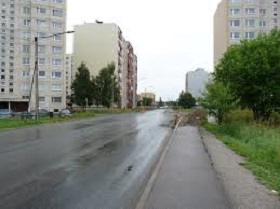Analytics, Estonia, Quality of life, Real Estate, Society
International Internet Magazine. Baltic States news & analytics
Tuesday, 16.12.2025, 06:48
Study: Continuation of Tallinn's segregation would have ravaging effect on economy
 Print version
Print version |
|---|
According to specialists, Estonia currently has enough time as well as functioning solutions to prevent the problem, representatives of the Estonian Association of Architects said on Friday.
The study, titled "Socio-Economic Segregation in European Capital Cities. East Meets West" and carried out with the help of Tiit Tammaru, professor of urban and population geography and head of the Center for Migration and Urban Research at the Department of Geography of the University of Tartu, indicates that Tallinn, the capital of Estonia, is the capital with the fastest segregation in Europe.
This means that wealthier and less wealthy people move to different districts and distance more and more from one another. In Tallinn, the situation is made more complex by the fact that the aforementioned segregation is also based on ethnicity.
Speaking at the "Separated Spaces" conference of the Estonian Association of Architects, Tammaru highlighted that the level of socio-economic segregation and spatial divide in Tallinn is nearly twice as high as that of neighboring Riga and Vilnius. "The ethnic divide is also greater in Tallinn than in the other Baltic capitals and the general segregation is increasing significantly more rapidly," Tammaru added.
In a few decades, the oppositions emerging from segregation will cause the society very great expenses and have a devastating effect on the economy and the unity of the society -- the competitiveness of the city will decline, new social problems will emerge, crime and cultural exclusion will increase, and so on. At the same time, high real estate prices in the city center will act as a catalyst for urban sprawl, which will also increase the burden originating from the mistakes of spatial planning on the society.
"If we do nothing, then 20-30 years from now, we will be in the same situation as Paris or other major European cities suffering from segregation," vice president of the Estonian Association of Architects and conference organizer Andro Mand, said. "The good news is that we still have time to prevent the worst and apply Europe's best practices in Tallinn instead of repeating the previous mistakes of others," he added.
One of the factors of segregation is the deepening economic inequality and the boom of new developments on the Tallinn real estate market. "People with lower incomes are finding it increasingly difficult to enter the real estate market, and they are gathering in areas with cheaper prices and older housing stock. We are foremost talking about Lasnamae and Vaike-Oismae here," Mand said. "The social housing created by the city, which is foremost meant for people requiring social aid, also tend to gather in the same areas, which, in turn, accelerates socio-economic encapsulation," he added.
"In Tallinn, too, what segregates more is new housing construction and what segregates less is renovating the existing housing stock and here, we must think about what to focus on in the future -- on building new houses or on recycling the existing housing stock, making it more modern, livable," Tammaru said. He added that the latter would be a faster, cheaper and more environmentally friendly option for slowing down segregation.
"Another effective measure -- not to gather people requiring social support in one area as is currently sadly taking place in connection with the establishment of social housing mostly in Lasnamae, but to take over the experience of our neighboring city Helsinki, for example. Namely, Helsinki is operating with rental apartments scattered across the city in so-called regular buildings in order to avoid creating closed communities with lower incomes," Mand said. Tammaru added that this city apartment program may initially seem like a more expensive investment but it will instead benefit the city in the perspective of five to ten years and this is also affirmed by Helsinki's experience.
As another significant additional measure against segregation, Mand highlighted high-quality and modern architecture and public space. "When planning social housing, many European cities organize architectural competitions and the public sector is the leader in this field," he added. Thanks to the fact that there are a lot of apartment buildings in Tallinn that have been established on the basis of a standard project, the design and technical realization of their renovation could be standardized as much as possible, which, in turn, would leave more room and assets for dignified architectural solutions.
"People who do not have the financial means to enter the real estate market also appreciate the architecture of the dwellings and need a dignified living environment and this influences people's attitudes and behavior. There are examples in the world of successfully reducing and preventing social problems through better planning of living environment. Tallinn has all the prerequisites for this," Mand said.








 «The Baltic Course» Is Sold and Stays in Business!
«The Baltic Course» Is Sold and Stays in Business!

